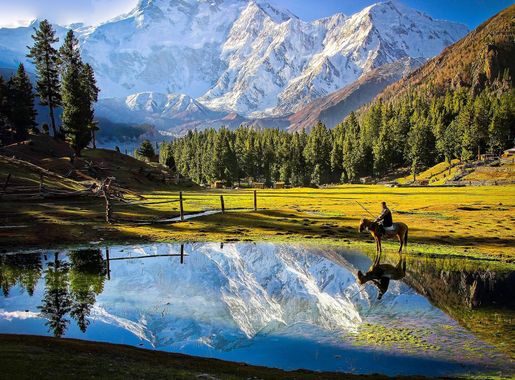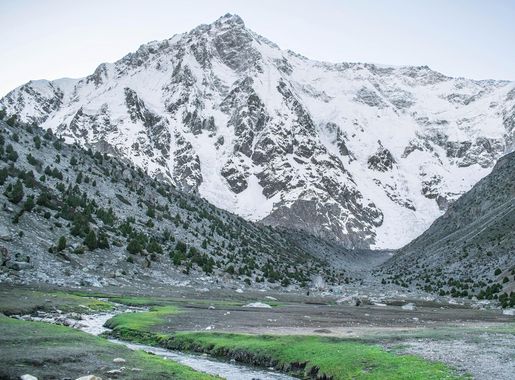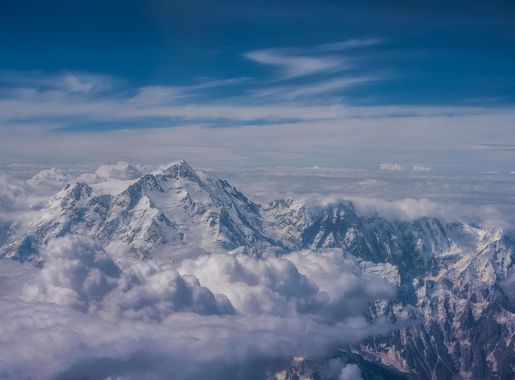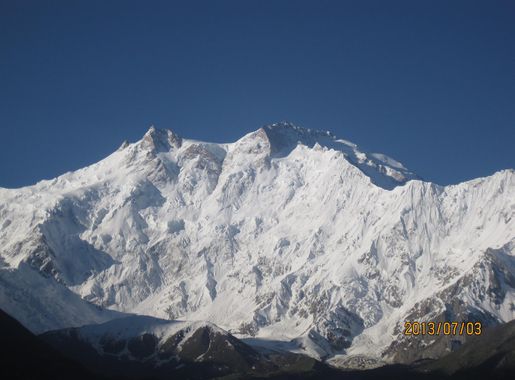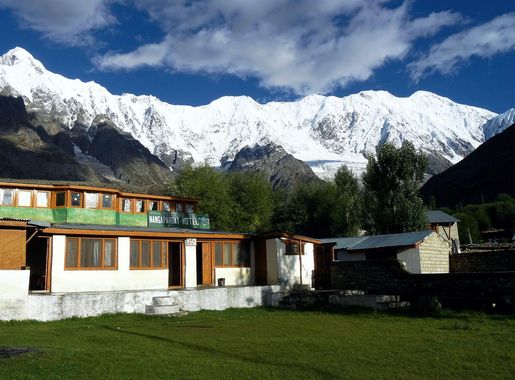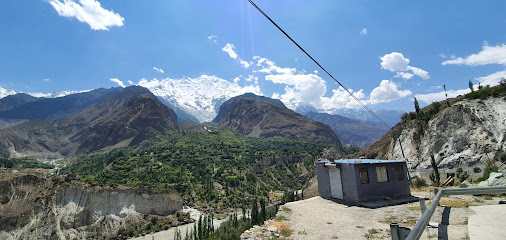
The Majestic Nanga Parbat Base Camp: Gateway to the Killer Mountain
Explore the breathtaking Nanga Parbat Base Camp in Pakistan, a serene haven for trekkers and nature lovers with panoramic views, rich biodiversity, and local culture.
Nestled in the northern region of Pakistan, Nanga Parbat Base Camp offers an unparalleled adventure for those seeking to immerse themselves in the raw beauty of one of the world's most formidable peaks. Known as the 'Killer Mountain,' Nanga Parbat stands at an awe-inspiring 8,126 meters, making it the ninth-highest mountain in the world. The journey to the base camp is a thrilling expedition through lush green meadows, dense forests, and crystal-clear streams, all set against the backdrop of the towering Himalayan range. The base camp itself is a serene haven for trekkers and nature lovers alike. With panoramic views of the mighty Nanga Parbat and its surrounding peaks, the camp provides a perfect spot to unwind and reflect on the magnificence of nature. The area is rich in biodiversity, home to a variety of flora and fauna, making it a must-visit for wildlife enthusiasts. The crystal-clear air and the star-studded night skies offer an experience that is both humbling and exhilarating. Visitors can also explore the local culture, as the region is inhabited by friendly and hospitable people who are always eager to share their traditions and stories. Whether you're an experienced mountaineer looking to conquer new heights or a casual trekker in search of stunning landscapes, Nanga Parbat Base Camp promises an unforgettable adventure.
Local tips in Nanga Parbat Base Camp
- Plan your visit between June and August for the most favorable weather conditions.
- Ensure you have the necessary permits, as the area is protected and regulated by local authorities.
- Hire a local guide for the trek; their knowledge of the terrain and culture can enhance your experience.
- Pack warm clothing, even in summer, as temperatures can drop significantly at night.
- Bring a high-quality camera to capture the stunning landscapes and wildlife.
The Majestic Nanga Parbat Base Camp: Gateway to the Killer Mountain
Nestled in the northern region of Pakistan, Nanga Parbat Base Camp offers an unparalleled adventure for those seeking to immerse themselves in the raw beauty of one of the world's most formidable peaks. Known as the 'Killer Mountain,' Nanga Parbat stands at an awe-inspiring 8,126 meters, making it the ninth-highest mountain in the world. The journey to the base camp is a thrilling expedition through lush green meadows, dense forests, and crystal-clear streams, all set against the backdrop of the towering Himalayan range. The base camp itself is a serene haven for trekkers and nature lovers alike. With panoramic views of the mighty Nanga Parbat and its surrounding peaks, the camp provides a perfect spot to unwind and reflect on the magnificence of nature. The area is rich in biodiversity, home to a variety of flora and fauna, making it a must-visit for wildlife enthusiasts. The crystal-clear air and the star-studded night skies offer an experience that is both humbling and exhilarating. Visitors can also explore the local culture, as the region is inhabited by friendly and hospitable people who are always eager to share their traditions and stories. Whether you're an experienced mountaineer looking to conquer new heights or a casual trekker in search of stunning landscapes, Nanga Parbat Base Camp promises an unforgettable adventure.
When is the best time to go to Nanga Parbat Base Camp?
Iconic landmarks you can’t miss
Nanga Parbat
Explore Nanga Parbat, a breathtaking Himalayan peak known for its stunning treks, rich culture, and awe-inspiring landscapes.
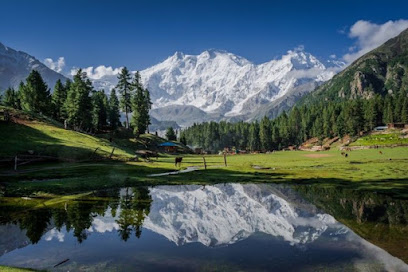
Fairy Meadows Cottages
Experience unparalleled tranquility and stunning vistas at Fairy Meadows Cottages, your gateway to the majestic Nanga Parbat.

Beyal Camp
Discover the serene beauty of Beyal Camp, the perfect base for exploring Nanga Parbat, surrounded by breathtaking Himalayan landscapes.
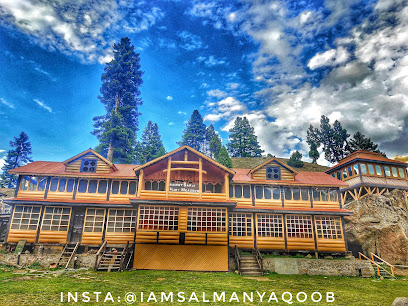
K2 Base Camp
Explore the breathtaking beauty of K2 Base Camp, a must-visit destination for adventure seekers in the majestic Karakoram range.
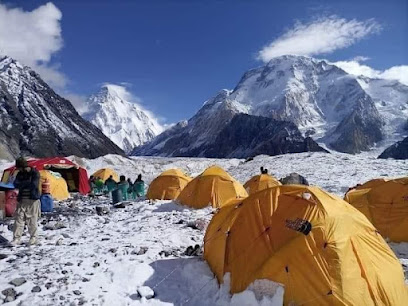
Nanga Pir Peak
Discover the breathtaking beauty of Nanga Pir Peak, a Himalayan gem perfect for adventure seekers and nature lovers alike.
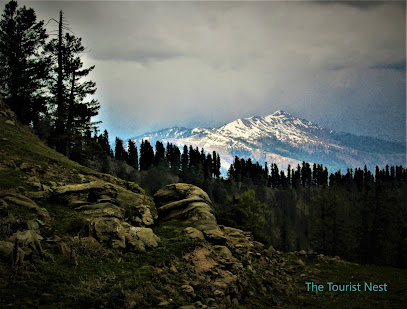
Nanga Pir Top
Discover the breathtaking views and rich history at Nanga Pir Top, a stunning landmark in Azad Jammu and Kashmir.
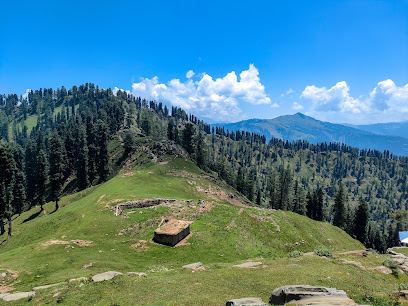
Nangan Sar
Explore the majestic Nangan Sar, a breathtaking mountain peak in Balochistan, perfect for nature lovers and adventure seekers alike.

Unmissable attractions to see
Babusar Pass
Discover the stunning beauty of Babusar Pass, where majestic mountains meet breathtaking vistas in the heart of the Himalayas.
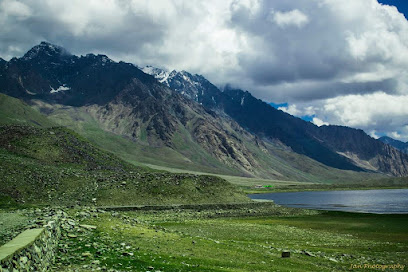
Nanga Parbat
Explore the breathtaking beauty and challenging climbs of Nanga Parbat, a must-visit destination for adventurers and nature lovers alike.
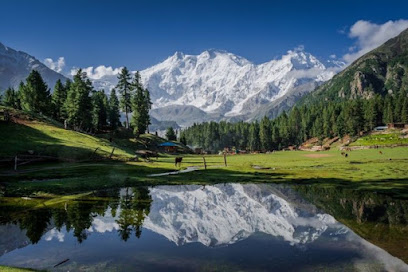
Fairy Meadows
Discover the enchanting beauty of Fairy Meadows, a serene plateau at the foot of Nanga Parbat, perfect for trekkers and nature lovers alike.
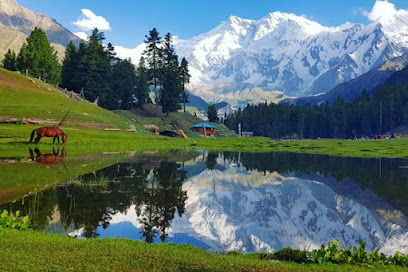
Fairy Meadows Cottages
Discover the serene beauty of Fairy Meadows Cottages, offering cozy accommodations with breathtaking views of Nanga Parbat in Pakistan.
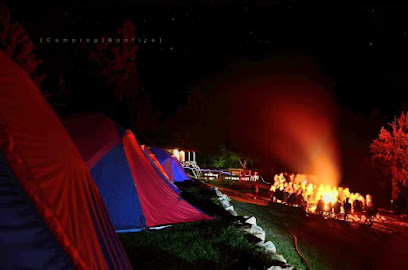
Deosai Plains
Discover the breathtaking beauty of Deosai Plains, a high-altitude national park in Gilgit-Baltistan, home to stunning landscapes and diverse wildlife.
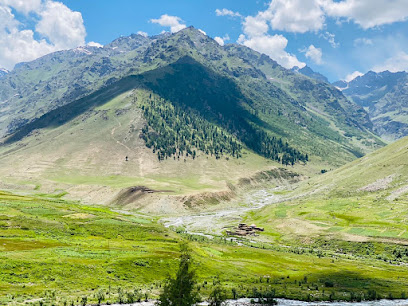
Rama Lake
Experience the breathtaking beauty of Rama Lake, a tranquil oasis surrounded by majestic mountains, perfect for adventure and relaxation.
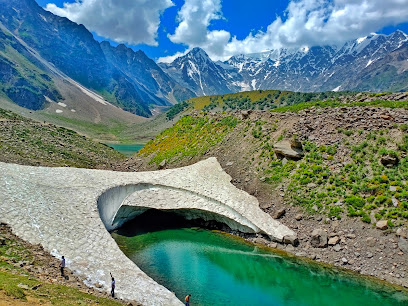
Borit Lake
Experience the breathtaking beauty of Borit Lake in Hunza Nagar, a serene escape surrounded by majestic mountains and vibrant turquoise waters.

Beyal Camp
Discover the enchanting Beyal Camp, where breathtaking views of Nanga Parbat meet the serenity of the Himalayas for an unforgettable mountain escape.
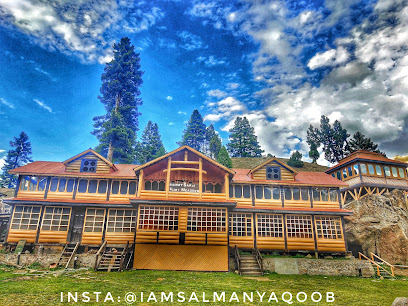
Rush Lake
Discover the serene beauty of Rush Lake, a hidden gem in Hunza Nagar, offering breathtaking views, trekking adventures, and tranquil landscapes.
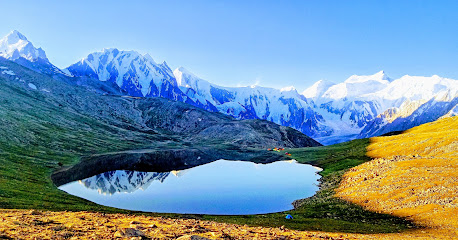
K2 view point Machulo La
Experience the breathtaking views of K2 at Machulo La, a must-visit hiking area in the heart of Gilgit-Baltistan's stunning landscapes.
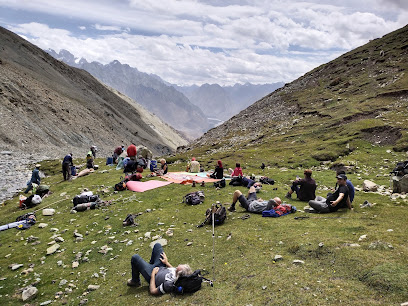
Fairy Meadows National Park
Experience the breathtaking beauty of Fairy Meadows National Park, where lush landscapes meet majestic peaks in Gilgit-Baltistan, Pakistan.
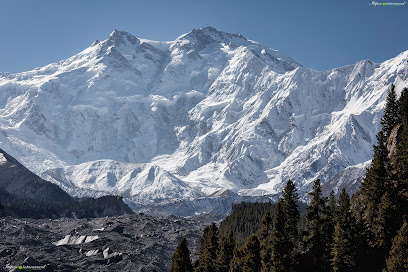
Hispar Glacier
Discover the breathtaking beauty of Hispar Glacier in Gilgit-Baltistan, a must-visit destination for adventure seekers and nature lovers.
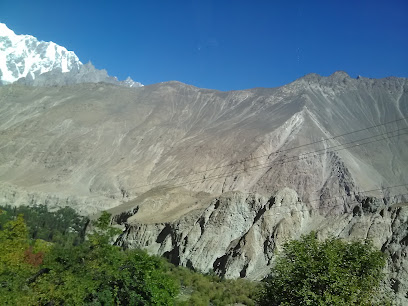
Fairy Meadows Greenland Resorts
Discover the tranquility and breathtaking views at Fairy Meadows Greenland Resorts, your gateway to the majestic Nanga Parbat.
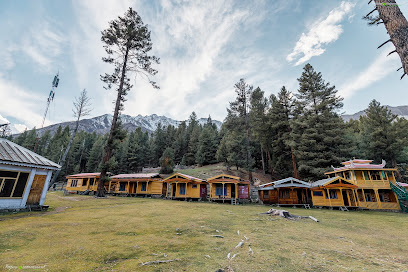
Urdukas
Discover the serene beauty of Urdukas, a hidden park in Pakistan perfect for camping, hiking, and immersing in nature's tranquility.
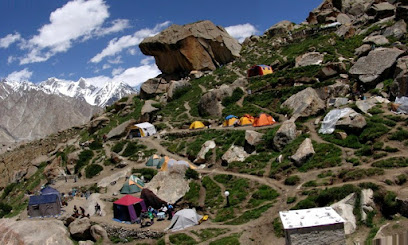
Nanga Pir Peak
Explore the breathtaking beauty of Nanga Pir Peak, a majestic Himalayan destination perfect for adventure seekers and nature lovers alike.
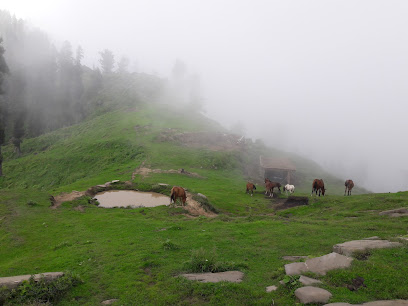
Essential places to dine
Fairy Meadows Cottages
Discover tranquility at Fairy Meadows Cottages—your gateway to breathtaking views and adventures near Nanga Parbat.
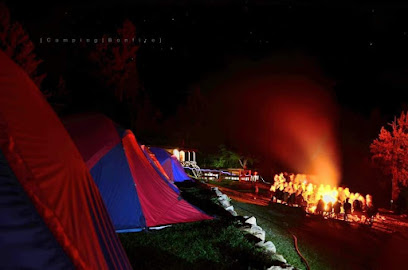
Beyal Camp
Experience the serene beauty of Beyal Camp, your gateway to adventure at Nanga Parbat's stunning base.
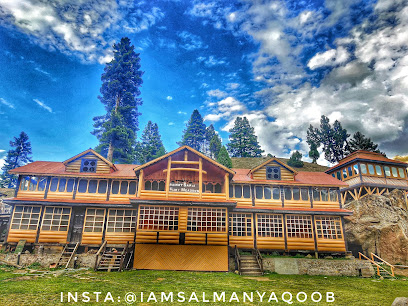
Fairy Meadows Guest House
Discover unparalleled tranquility and breathtaking views at Fairy Meadows Guest House near Nanga Parbat Base Camp.
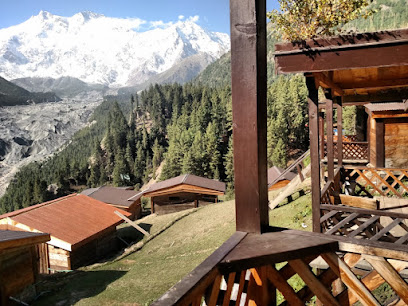
Nanga Parbat Tourist Cottage
Experience breathtaking views and warm hospitality at Nanga Parbat Tourist Cottage in Astore—your perfect mountain getaway.
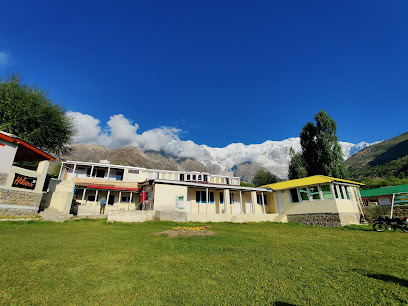
Nanga Parbat View Hotel
Discover tranquility and adventure at Nanga Parbat View Hotel surrounded by stunning mountain landscapes in Fairy Meadows.
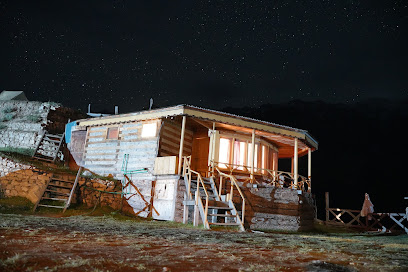
Shangrila Fairy Meadow Resort
Experience luxury amidst nature's wonder at Shangrila Fairy Meadow Resort - where breathtaking landscapes meet exceptional hospitality.
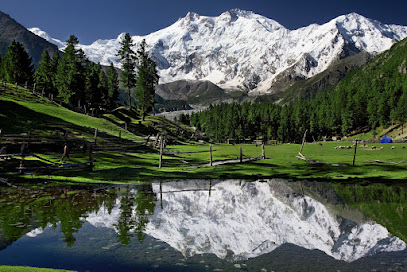
Pakistan
Explore the mesmerizing landscapes and savor the exquisite flavors of Pakistan - a treasure trove for every traveler.
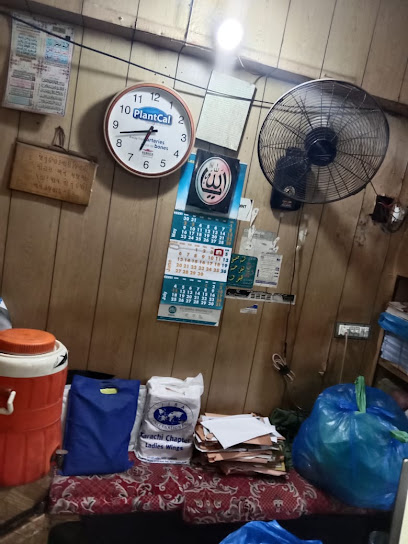
Nanga Parbat Hotel
Experience authentic Pakistani cuisine at Nanga Parbat Hotel while surrounded by breathtaking views in Gilgit-Baltistan.
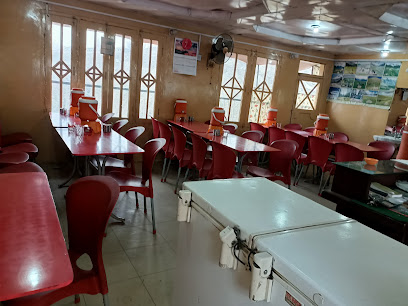
Markets, malls and hidden boutiques
Beyal Camp
Discover the serenity of Beyal Camp, the gateway to Nanga Parbat, offering breathtaking views and a unique mountain experience.

Nanga Parbat Base Camp
Explore Nanga Parbat Base Camp, a breathtaking gateway to the majestic mountains of Pakistan, where adventure meets stunning natural beauty.
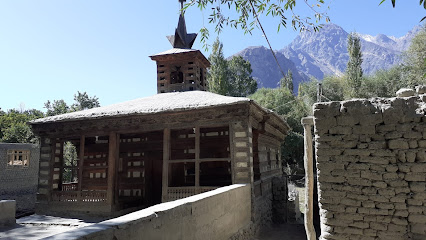
Local Phrases about Nanga Parbat Base Camp
-
- Helloسلام
[Salaam] - Goodbyeخدا حافظ
[Khuda Hafiz] - Yesہاں
[Haan] - Noنہیں
[Nahi] - Please/You're welcomeبراہ کرم
[Barah-e-karam] - Thank youشکریہ
[Shukriya] - Excuse me/Sorryمعذرت چاہتا ہوں
[Mazrat chahta hoon] - How are you?آپ کیسے ہیں؟
[Aap kaise hain?] - Fine. And you?ٹھیک ہوں۔ آپ؟
[Theek hoon. Aap?] - Do you speak English?کیا آپ انگریزی بولتے ہیں؟
[Kya aap Angrezi bolte hain?] - I don't understandمیں سمجھ نہیں پایا
[Mein samajh nahi paya]
- Helloسلام
-
- I'd like to see the menu, pleaseبراہ کرم مینو دیکھنا چاہوں
[Barah-e-karam menu dekhna chahoon] - I don't eat meatمیں گوشت نہیں کھاتا
[Mein gosht nahi khata] - Cheers!خوش رہیں!
[Khush rahain] - I would like to pay, pleaseبراہ کرم میں ادا کرنا چاہتا ہوں
[Barah-e-karam mein ada karna chahta hoon]
- I'd like to see the menu, pleaseبراہ کرم مینو دیکھنا چاہوں
-
- Help!مدد!
[Madad!] - Go away!چلے جاؤ!
[Chale jao!] - Call the Police!پولیس کو بلاؤ!
[Police ko bulao!] - Call a doctor!ڈاکٹر کو بلاؤ!
[Doctor ko bulao!] - I'm lostمیں گم ہو گیا ہوں
[Mein gum ho gaya hoon] - I'm illمجھے بیماری ہے
[Mujhe bimari hai]
- Help!مدد!
-
- I'd like to buy...میں خریدنا چاہتا ہوں...
[Mein kharidna chahta hoon...] - I'm just lookingمیں صرف دیکھ رہا ہوں
[Mein sirf dekh raha hoon] - How much is it?یہ کتنا ہے؟
[Yeh kitna hai?] - That's too expensiveیہ بہت مہنگا ہے
[Yeh bohat mehnga hai] - Can you lower the price?کیا آپ قیمت کم کر سکتے ہیں؟
[Kya aap qeemat kam kar sakte hain?]
- I'd like to buy...میں خریدنا چاہتا ہوں...
-
- What time is it?وقت کیا ہوا ہے؟
[Waqt kya hua hai?] - It's one o'clockایک بجے ہیں
[Ek baje hain] - Half past (10)دس بج کر پندرہ منٹ ہو رہے ہیں
[Das baje kar pandrah minute ho rahe hain] - Morningصبح
[Subah] - Afternoonدوپہر
[Dopahar] - Eveningشام
[Shaam] - Yesterdayکل
[Kal] - Todayآج
[Aaj] - Tomorrowکل
[Kal] - 1ایک
[Ek] - 2دو
[Do] - 3تین
[Teen] - 4چار
[Chaar] - 5پانچ
[Paanch] - 6چھے
[Chhe] - 7سات
[Saat] - 8آٹھ
[Aath] - 9نو
[Nau] - 10دس
[Das]
- What time is it?وقت کیا ہوا ہے؟
-
- Where's a/the...?کہاں ہے...
[Kahan hai...] - What's the address?پتہ کیا ہے؟
[Pata kya hai?] - Can you show me (on the map)?کیا آپ مجھے دکھا سکتے ہیں؟
[Kya aap mujhe dikhwa sakte hain?] - When's the next (bus)?اگلی (بس) کب ہے؟
[Agli (bus) kab hai?] - A ticket (to ....)ایک ٹکٹ (کے لئے....)
[Ek ticket (ke liye...)]
- Where's a/the...?کہاں ہے...
History of Nanga Parbat Base Camp
-
Nanga Parbat, meaning 'Naked Mountain' in Urdu, is one of the world's tallest peaks, standing at 8,126 meters. The name was derived from the fact that its slopes are largely barren of vegetation. The mountain was first surveyed in the 19th century by the British during their colonial rule in the Indian subcontinent. Early explorers were captivated by its imposing presence and natural beauty, which led to the first recorded attempts to map and understand this geological wonder.
-
The first successful ascent of Nanga Parbat was achieved by Austrian climber Hermann Buhl on July 3, 1953. Buhl's solo climb, without supplemental oxygen and after his team had turned back, is considered one of the most extraordinary feats in mountaineering history. His ascent marked a significant milestone and placed Nanga Parbat firmly on the map for future climbers and adventurers.
-
One of the most tragic events in the history of Nanga Parbat occurred in 1934 with a German expedition led by Willy Merkl. The team faced severe weather conditions, resulting in the loss of ten climbers and porters. This expedition is remembered for its high fatality rate and the harsh realities of high-altitude climbing. It led to the mountain being referred to as the 'Killer Mountain.'
-
Over the years, Nanga Parbat Base Camp has evolved to accommodate the needs of modern climbers and trekkers. Initially a rudimentary campsite, it has developed into a more structured area with improved facilities. These enhancements have made it more accessible and safer for those looking to explore or summit the mountain. The base camp now includes designated camping areas, communication facilities, and services provided by local guides and porters.
-
Nanga Parbat holds deep cultural significance for the local communities, including the Diamer and Gilgit-Baltistan regions. The mountain is intertwined with local legends and folklore, often seen as a symbol of natural beauty and spiritual significance. Traditional practices and festivals in the surrounding villages often reflect their reverence for the mountain, making it an integral part of their cultural heritage.
Nanga Parbat Base Camp Essentials
-
Nanga Parbat Base Camp is situated in the Gilgit-Baltistan region of Pakistan. The nearest major city is Islamabad, from where you can take a domestic flight to Gilgit or Skardu. From Gilgit or Skardu, you will need to travel by road to the village of Tarashing or Raikot Bridge, depending on your chosen trekking route. From these points, a combination of 4x4 jeeps and trekking will take you to the Base Camp.
-
Once you arrive in Gilgit or Skardu, local transportation options include 4x4 jeeps, which are essential for navigating the rugged terrain. Public buses and shared taxis are also available for more budget-conscious travelers. For the trekking part of your journey, hiring a local guide and porters is highly recommended and often necessary for carrying supplies.
-
The official currency in Pakistan is the Pakistani Rupee (PKR). Credit cards are accepted in major cities like Islamabad, but cash is essential for transactions in remote areas such as Nanga Parbat Base Camp. ATMs are scarce outside of major towns, so it is advisable to withdraw sufficient cash before leaving Islamabad or Gilgit.
-
While the area around Nanga Parbat Base Camp is generally safe for tourists, it is crucial to stay vigilant. Avoid traveling alone and always stick to established trekking routes. Gilgit-Baltistan is relatively safe, but some areas may have political tensions or occasional instability. Always check travel advisories and consult local guides for the latest safety information.
-
In case of an emergency, it is essential to have a reliable means of communication. Satellite phones are recommended as cell phone coverage is limited. Emergency services can be contacted through local guides or trekking agencies. It is also highly recommended to have comprehensive travel insurance that covers trekking and high-altitude activities. The nearest medical facilities are in Gilgit, but they may be basic, so be prepared for potential evacuation to Islamabad for serious medical issues.
-
Fashion: Do dress in layers and bring appropriate trekking gear, including waterproof clothing. Avoid wearing shorts or sleeveless tops in villages to respect local customs. Religion: Do respect local customs and traditions, especially in Muslim-majority areas. Women should consider wearing a scarf to cover their heads. Public Transport: Do be respectful and accommodating when using shared transportation. Avoid loud conversations and maintain cleanliness. Greetings: Do greet locals with 'Assalamu Alaikum' and a handshake. Maintain eye contact as a sign of respect. Eating & Drinking: Do try local food and drink plenty of water to stay hydrated. Avoid drinking tap water; stick to bottled or purified water.
-
To experience the area like a local, engage with the villagers in Tarashing or Tato. Participate in local customs and try traditional Balti cuisine. Hiring a local guide not only supports the community but also provides you with valuable insights into the culture and history of the region. Don't miss the chance to visit nearby attractions like Fairy Meadows for stunning views of Nanga Parbat.
Nearby Cities to Nanga Parbat Base Camp
-
Things To Do in Skardu
-
Things To Do in Naran
-
Things To Do in Kaghan
-
Things To Do in Abbottabad
-
Things To Do in Murree
-
Things To Do in Swat
-
Things To Do in Islamabad
-
Things To Do in Rawalpindi
-
Things To Do in Chitral
-
Things To Do in Jammu
-
Things To Do in Leh
-
Things To Do in Sialkot
-
Things To Do in Peshawar
-
Things To Do in Gujranwala
-
Things To Do in Amritsar

